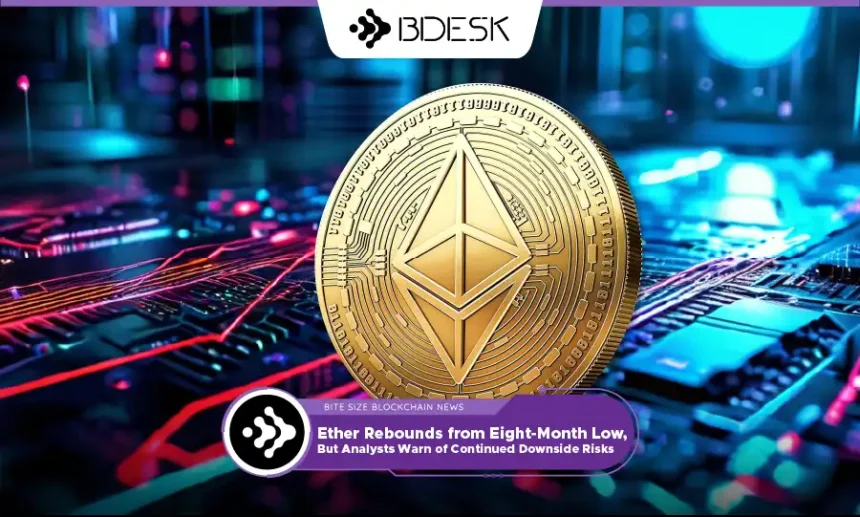Summary:
- Price Recovery: Ether’s price is currently trading 25% above its eight-month low of $2,112, reached on Aug. 5, with a 13% gain over the past seven days.
- Market Sentiment: Despite the recent uptrend, analysts caution that downside risks remain, primarily due to ETH sell-offs by market maker Jump Trading and concerns over a global recession.
- Historical Data: Ether dropped 35.5% from a high of $3,400 on July 29 to a low of $2,116 on Aug. 5. It has since recovered to $2,552.
- Technical Analysis: A bear flag pattern on the daily chart indicates that the downtrend may continue, despite the recent recovery.
- Market Impact: Bitcoin’s recent drop has triggered a broader sell-off across major cryptocurrencies, with Ether falling 3.8% and other altcoins like Solana, Cardano, and XRP experiencing losses around 2.5%.
- Institutional Interest: Despite market volatility, institutional demand for cryptocurrency has surged in Q2 2024, with Goldman Sachs holding $418 million in crypto exposure through investments in popular crypto ETFs.
Ether, the second-largest cryptocurrency by market capitalization, has rebounded significantly from its eight-month low of $2,112 reached on Aug. 5. Currently trading 25% above this low, Ether has gained 13% over the last seven days, with the price now hovering around $2,552.
However, despite this positive momentum, analysts are sounding the alarm on potential downside risks that could impact Ether’s price in the near future. The recent drawdown, fueled by ETH dumping by market maker Jump Trading and fears of a global recession, saw Ether plunge 35.5% from a high of $3,400 on July 29 to its swing low of $2,116 on Aug. 5.
While the price has recovered, technical indicators, such as the bear flag pattern on the daily chart, suggest that the downtrend could continue, casting a shadow over the recent recovery.
Market sentiment has also been affected by Bitcoin’s recent 4% drop, which led to a broader sell-off across major cryptocurrencies. Ether fell 3.8%, while other altcoins like Solana, Cardano, and Ripple’s XRP experienced smaller losses.
Despite these challenges, institutional interest in cryptocurrencies remains robust. Major Wall Street players like Goldman Sachs have significantly increased their crypto exposure, with the bank now holding $418 million in crypto assets, primarily through popular crypto ETFs. This growing institutional demand highlights the mainstream appeal of cryptocurrencies, even amid concerns over a potential U.S. recession.
Senate Majority Leader Chuck Schumer’s recent comments at the Crypto4Harris event also point to the possibility of pro-crypto legislation by the end of 2024, which could further influence the market’s trajectory, particularly if Vice President Kamala Harris is elected president.
Disclaimer:
The information provided on 13Desk is for informational purposes only and should not be considered financial advice. We strongly recommend conducting your own research and consulting with a qualified financial advisor before making any investment decisions. Investing in cryptocurrencies carries risks, and you should only invest what you can afford to lose. 13Desk is not responsible for any financial losses incurred from your investment activities.











